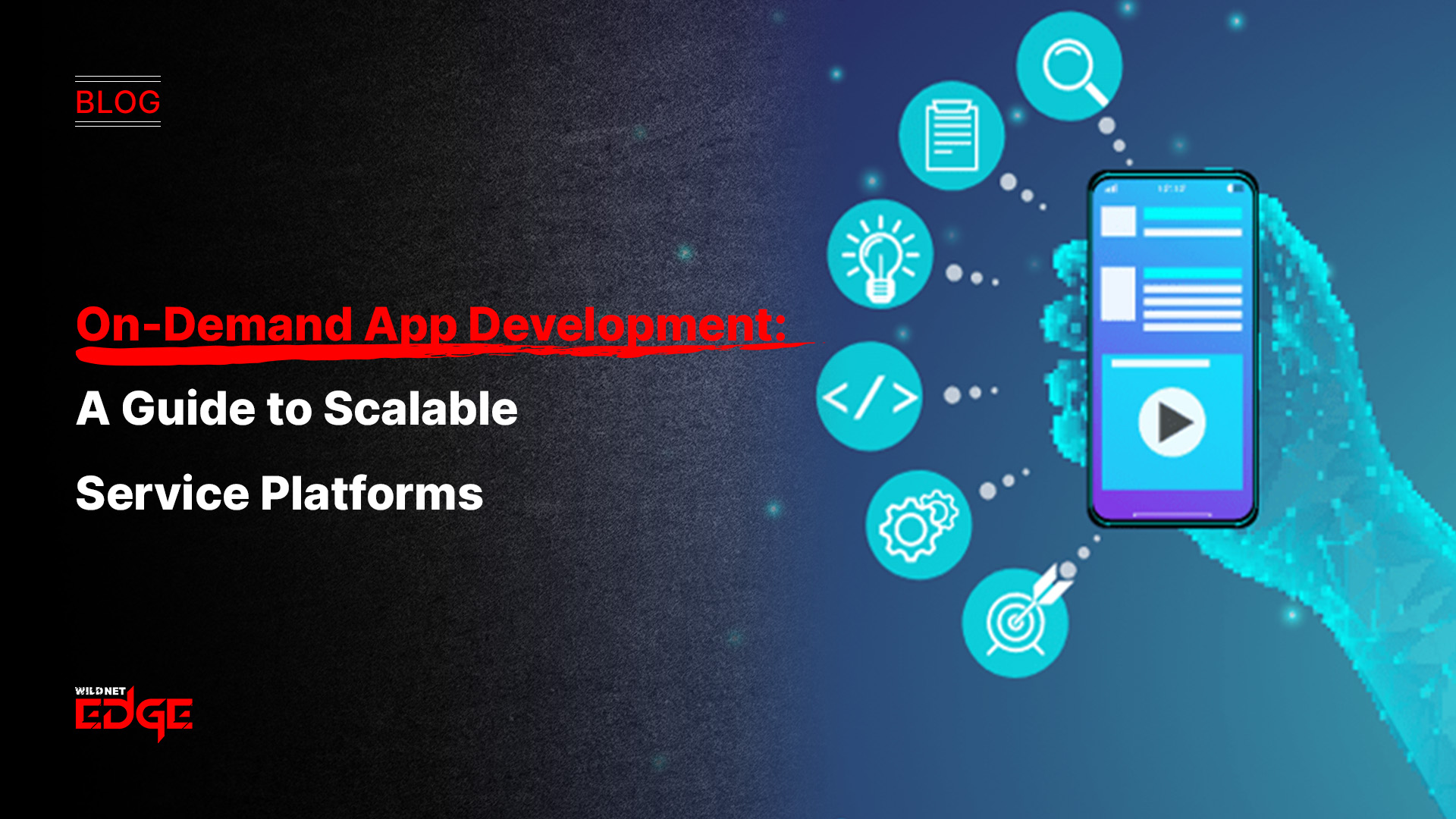Struggling to keep your real-time app responsive when user traffic spikes? You’re not alone. Building a scalable backend is critical to handle growing loads without crashing or lagging. In this guide, we’ll break down proven architectures that leverage websocket communication, smart load balancing, and Redis caching to keep your app fast and reliable no matter the scale. Let’s dive into creating backends that grow with your users.
Websockets for Real-Time Communication
Websockets have become the backbone of real-time applications, offering persistent, low-latency connections that traditional HTTP protocols just can’t match. Unlike HTTP, which follows a request-response model opening and closing connections every time data is exchanged, websocket maintains a continuous, full-duplex connection between client and server.
Overview of websocket protocol and benefits over traditional HTTP
The websocket protocol establishes a single TCP connection that remains open, allowing the server to push updates instantly without the client having to make repeated requests. This reduces overhead and network latency significantly. For real-time apps, these properties translate into smoother experiences and faster data delivery.
Key benefits include:
- Low latency: Messages are delivered nearly instantly.
- Reduced overhead: No need to constantly open/close connections.
- Bidirectional communication: Enables both client and server to send data anytime, perfect for interactive experiences.
Use cases in chat applications, live notifications, and multiplayer games
Websocket’s ability to sustain real-time updates makes it ideal for:
- Chat applications: Instant message delivery and typing indicators.
- Live notifications: Up-to-the-second alerts and status changes.
- Multiplayer games: Seamless player interaction and world updates.
These scenarios demand minimal delay, which websockets uniquely fulfill.
Challenges with scaling websocket connections
While websocket is powerful, scaling it isn’t straightforward. Persistent connections consume server resources continuously, leading to challenges when millions of users connect simultaneously. Unlike stateless HTTP requests, managing sessions, particularly maintaining state and connection affinity, gets complicated in distributed systems. Servers need to share connection information to ensure message delivery, requiring efficient connection routing and state synchronization.
To overcome this, backend architectures must implement smart session management and balancing techniques (which we’ll explore next). Efficient resource management is key, as is leveraging caching and message brokers like Redis to distribute updates.
Load Balancing Strategies for Scalable Backends
Load balancing is vital for achieving a scalable backend that can handle web traffic surges without degrading performance or causing downtime.
Types of load balancers (Layer 4 vs Layer 7)
Load balancers generally operate on two layers:
- Layer 4 (Transport Layer): Balances traffic based on IP addresses and TCP/UDP ports. It’s fast but agnostic of application data, making it simpler and suitable for general traffic distribution.
- Layer 7 (Application Layer): Balances traffic by inspecting HTTP headers, cookies, or websocket handshakes. This deep packet inspection allows advanced routing capabilities such as sticky sessions or routing based on message content.
Sticky sessions vs stateless load balancing with websockets
Websockets require persistent connections, so traditional stateless load balancing can cause issues when requests get routed to different servers mid-connection.
- Sticky sessions (session affinity): The load balancer remembers which backend server handled a client’s initial websocket connection and routes all subsequent traffic for that session to the same server—crucial for session continuity.
- Stateless load balancing: Does not maintain session affinity but requires external state synchronization, often involving shared caches or message brokers like Redis to sync session and message data across servers.
Choosing between these depends on your architecture and scaling goals. Sticky sessions simplify connection management but can limit scalability and increase the risk of uneven load. Stateless approaches, combined with caching layers, improve scalability but demand more complexity upfront.
Techniques to manage websocket connections in load balanced environments
To effectively handle websocket traffic across multiple servers, consider these techniques:
- Use load balancers that support websocket protocols natively, ensuring handshakes and connection upgrades pass through seamlessly. Modern load balancers like NGINX, HAProxy, or cloud-managed services (AWS ELB, Google Cloud Load Balancing) offer this capability.
- Enable session affinity or sticky sessions based on cookies or IP, depending on your use case. This ensures persistent connections aren’t disrupted.
- Integrate centralized state stores (e.g., Redis) for cross-server session and message state sync, vital when leveraging stateless load balancing for fault tolerance and scalability.
- Implement health checks and graceful failover to reconnect websocket clients without data loss during server restarts or failure.
Proper load balancing strategy is foundational to handling thousands or millions of simultaneous websocket connections efficiently.
Leveraging Redis for Performance and Scalability
Redis plays a pivotal role in scalable backend architectures by functioning as both a high-speed in-memory cache and a message broker, directly supporting websocket-based real-time communication.
Redis pub/sub model for websocket message distribution
The publish/subscribe (pub/sub) model in Redis allows backend servers to communicate efficiently by publishing messages on channels that other servers subscribe to. In real-time apps, this means:
- When a user or system event triggers an update, the backend publishes a message to a Redis channel.
- Other backend instances subscribed to that channel receive the message instantly and push it through websocket connections to their connected clients.
This design enables horizontal scaling – multiple backend servers can coordinate in real time without tightly coupled connections, distributing websocket updates across clusters seamlessly.
Caching session data to reduce database load
Redis’s blazing-fast read/write speeds make it ideal for caching user session data. Storing user state, auth tokens, and session info in Redis reduces latency compared to fetching from persistent databases constantly. By offloading frequent session retrievals to Redis:
- Backend APIs respond faster.
- Database load decreases, improving overall system throughput.
- Session synchronization across load balanced backend servers becomes straightforward.
Ensure you manage session expiration policies appropriately to balance cache freshness with resource consumption.
Using Redis for rate limiting and queuing to manage load spikes
Real-time apps often face unpredictable traffic spikes or malicious behavior. Redis can support:
- Rate limiting: Tracking user or IP request counts in Redis lets you enforce limits quickly, protecting your backend from overuse or abuse without affecting other users.
- Task queuing: For processing-intensive jobs or message delivery retries, Redis-backed queues enable asynchronous workflows, smoothing traffic bursts and improving resilience.
These techniques collectively help sustain backend performance under pressure and ensure consistent real-time data delivery even during peak load.
Advanced Trends and Best Practices in Scalable Backends
Keeping your scalable backend competitive in 2025 means embracing the latest trends and architectural refinements.
Serverless architectures and edge computing for backend scaling
Serverless platforms (AWS Lambda, Google Cloud Functions) allow automatic scaling of backend logic without server management. Combining serverless with edge computing—processing data closer to users on distributed nodes—reduces latency dramatically, essential for real-time apps requiring instant feedback.
Benefits include:
- Near-instant scaling in response to traffic spikes.
- Reduced data transfer and processing delay.
- Integration with websocket gateways at the edge for localized connection handling.
Microservices orchestration with Redis and load balancers
Moving from monoliths to microservices helps isolate backend components, improving maintainability and scalability. Redis acts as a central message bus and cache that microservices use to communicate and share state efficiently. Load balancers route traffic smartly among microservices clusters, adhering to domain-specific scaling demands.
This layered approach enables:
- Independent scaling of chat, notification, or game logic services.
- Resilience through fault isolation.
- Continuous delivery and deployment agility.
Autoscaling strategies and monitoring solutions for real-time apps
Automated scaling based on real-time metrics ensures backend resources match demand dynamically. Implement:
- Metric-based autoscaling on CPU, memory, or websocket connection counts via cloud providers or Kubernetes HPA (Horizontal Pod Autoscaler).
- Real-time monitoring and alerting through observability tools like Prometheus, Grafana, or Datadog, focused on websocket latency, connection rates, and Redis throughput.
- Load testing and chaos engineering to proactively identify bottlenecks and failure points.
Incorporating these practices guarantees your scalable backend stays performant and reliable even as your app grows worldwide.
Conclusion
Building a truly scalable backend for real-time apps hinges on the smart integration of websockets, load balancing, and Redis. These technologies together ensure your app can gracefully handle growing user demand while maintaining seamless performance.
Websockets provide the persistent communication channels vital for low-latency updates, while load balancing strategies distribute connection loads to prevent bottlenecks. Redis strengthens backend speed and coordination by caching sessions, enabling efficient pub/sub messages, and supporting load management techniques.
For enterprises seeking expert implementation and reliable scalability, WildnetEdge stands out as a trusted partner with proven solutions that optimize your backend infrastructure. Ready to scale effortlessly? Connect with WildnetEdge today to future-proof your real-time app’s backend with cutting-edge architecture.
FAQs
Q1: How do websockets improve scalability in real-time apps?
Websockets provide persistent two-way communication channels, reducing overhead from repeated requests and enabling real-time data flow that scales efficiently with users.
Q2: What role does load balancing play in maintaining backend scalability?
Load balancing distributes incoming traffic evenly across multiple servers, preventing overload on any single backend resource, which is crucial for handling high concurrency in real-time apps.
Q3: How can Redis enhance the performance of a scalable backend?
Redis serves as a fast in-memory cache and pub/sub messaging system, speeding up data retrieval and enabling efficient websocket message broadcasting in distributed systems.
Q4: Can load balancers handle websocket connections differently from HTTP traffic?
Yes, load balancers need specialized configurations like sticky sessions or session affinity to maintain persistent websocket connections, unlike typical stateless HTTP requests.
Q5: What are modern architectural trends for scalable backend systems?
Emerging trends include serverless computing, edge deployments, microservices, and advanced autoscaling—all designed to dynamically adjust resources for real-time app demands.

Nitin Agarwal is a veteran in custom software development. He is fascinated by how software can turn ideas into real-world solutions. With extensive experience designing scalable and efficient systems, he focuses on creating software that delivers tangible results. Nitin enjoys exploring emerging technologies, taking on challenging projects, and mentoring teams to bring ideas to life. He believes that good software is not just about code; it’s about understanding problems and creating value for users. For him, great software combines thoughtful design, clever engineering, and a clear understanding of the problems it’s meant to solve.
 sales@wildnetedge.com
sales@wildnetedge.com +1 (212) 901 8616
+1 (212) 901 8616 +1 (437) 225-7733
+1 (437) 225-7733































